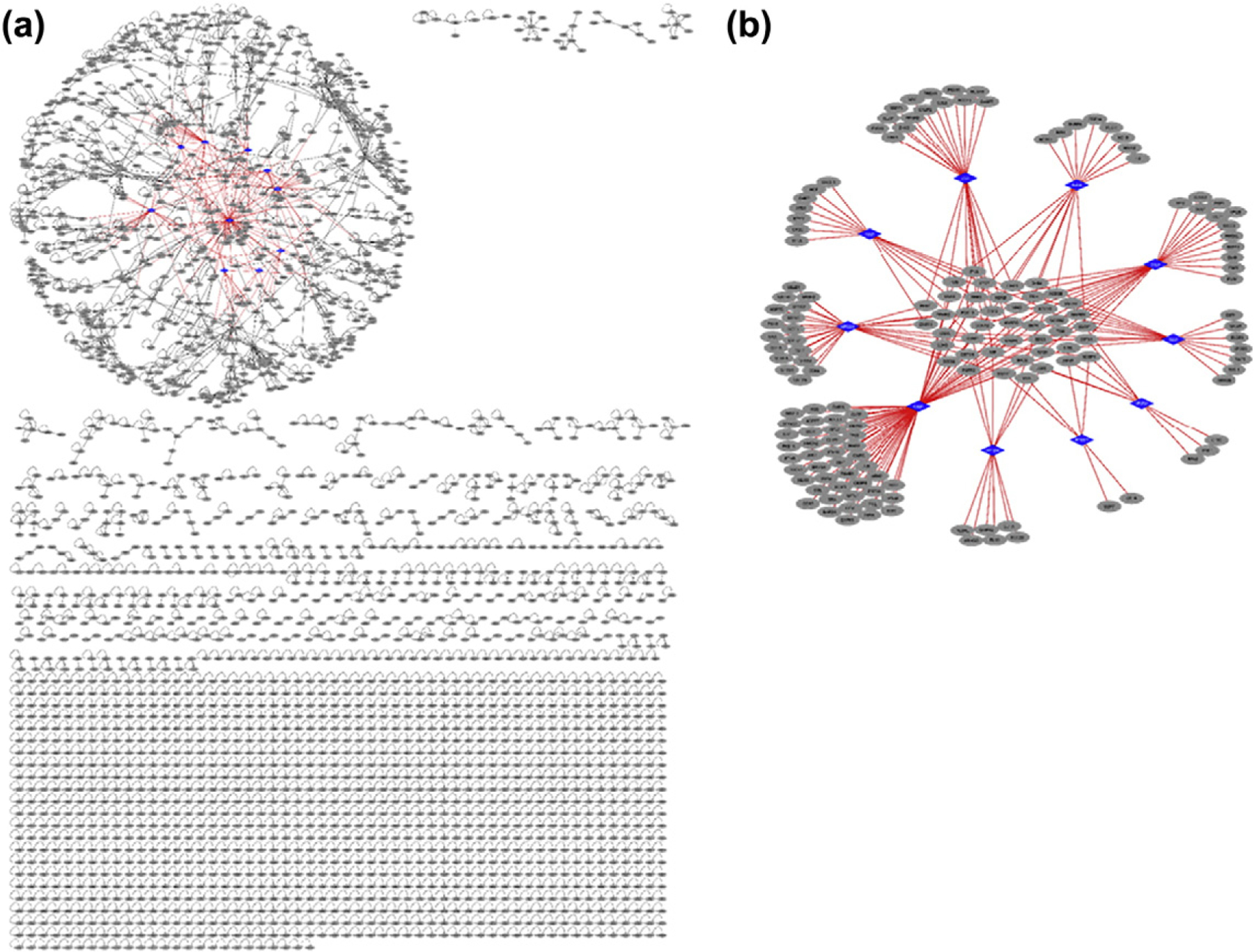Fig. 6.

Structural inter-species interaction network for H. pylori. All pairwise interactions have structures as complexes. Endogenous human interactions (black edges) are obtained from crystal structures (our template interface set), where human proteins are shown as gray circular nodes. Exogenous interactions (red edges) are our HPI models for 10 H. pylori proteins and are shown as red edges. (a) H. pylori proteins (blue diamond-shaped nodes) target the highly connected part (hair-ball) of the human PPI. (b) Structural HPI network without the endogenous human interactions. Most of the targets of individual H. pylori proteins are distinct, but some are shared across different H. pylori proteins. Thus, multiple H. pylori proteins target the same pathway.
